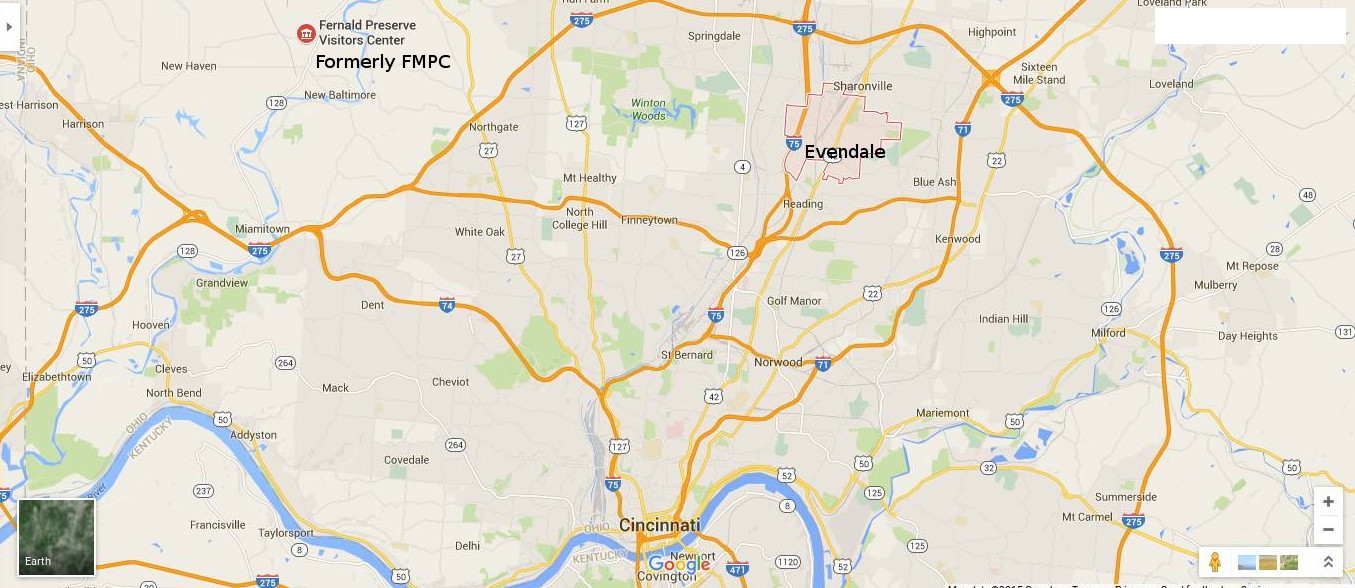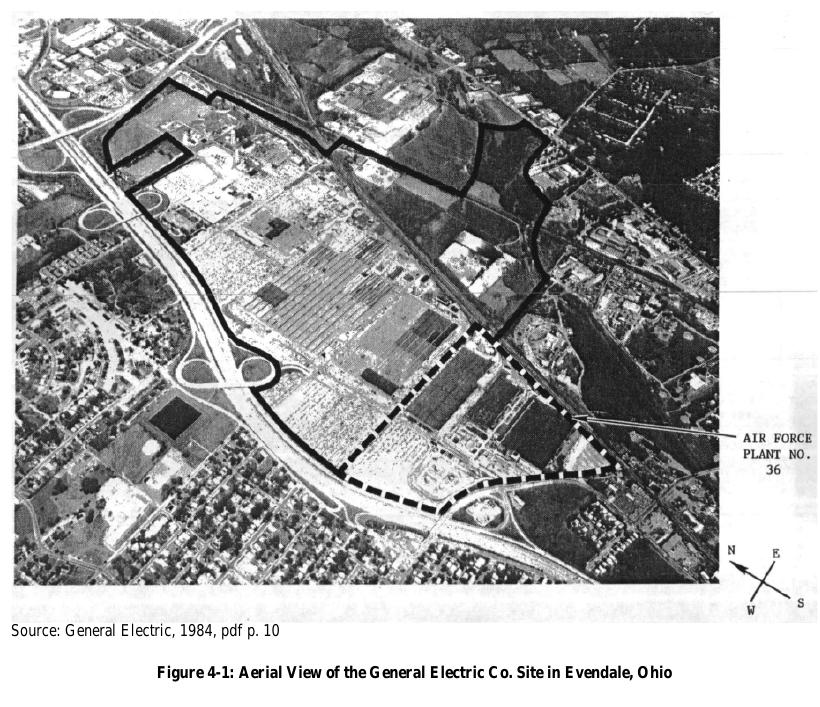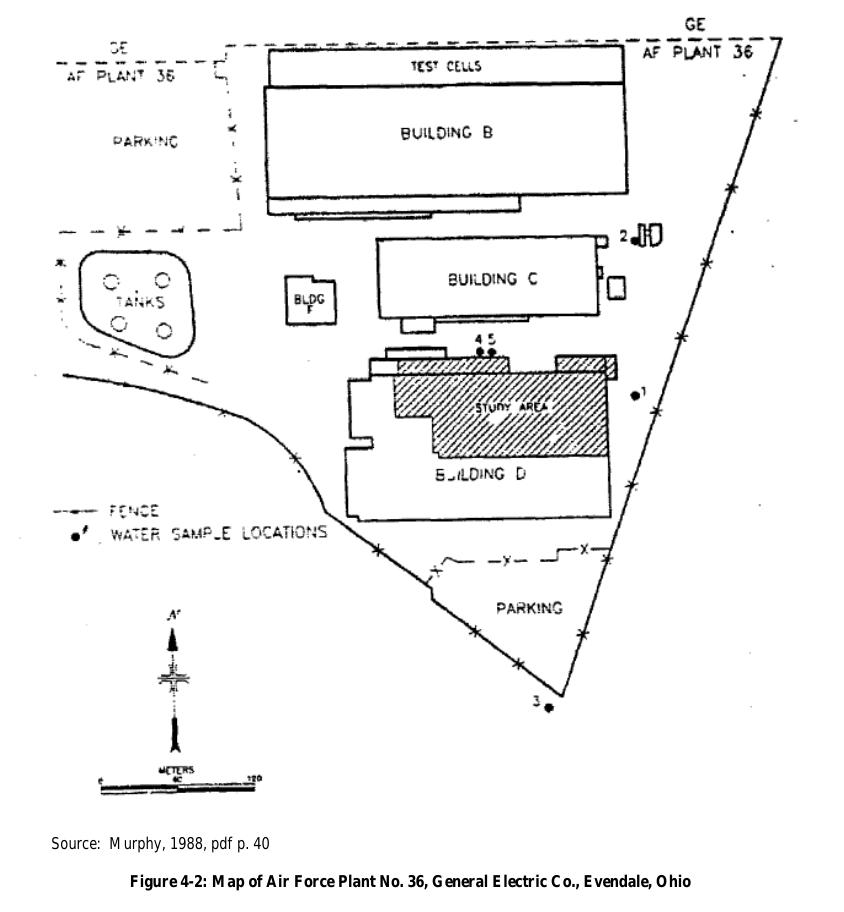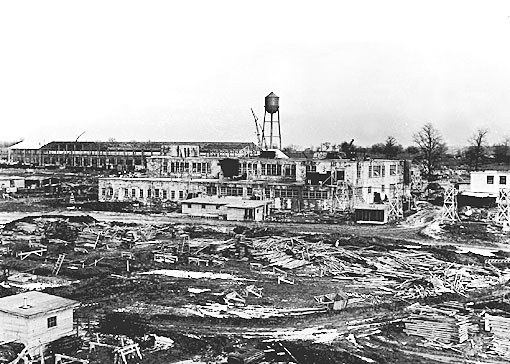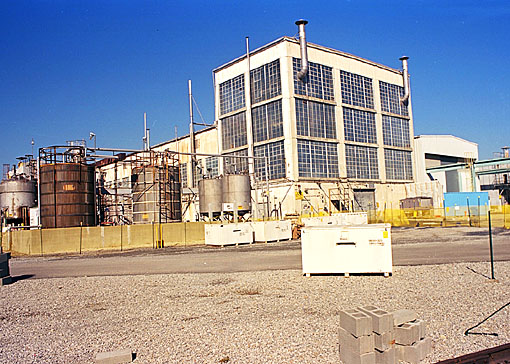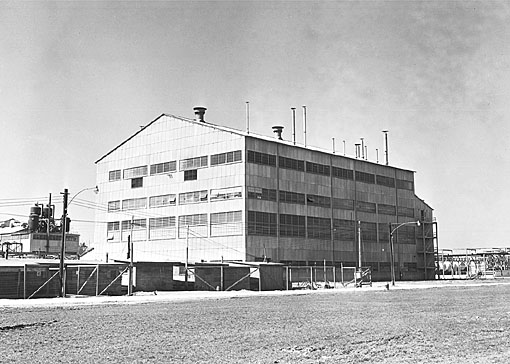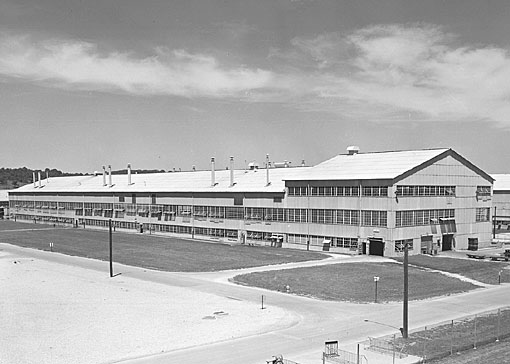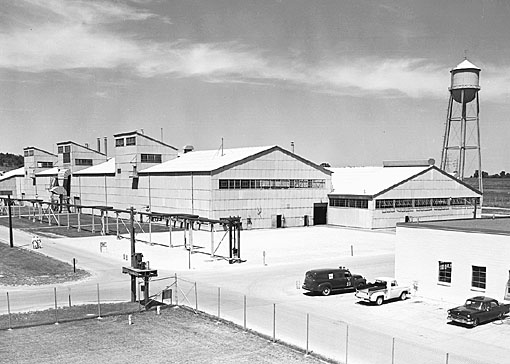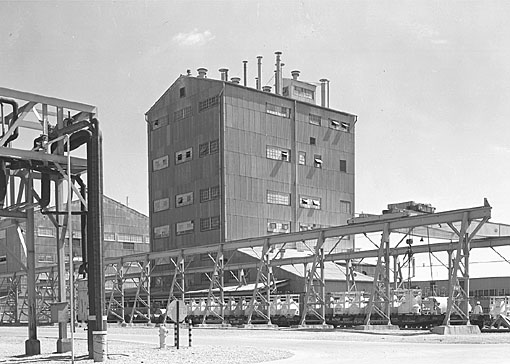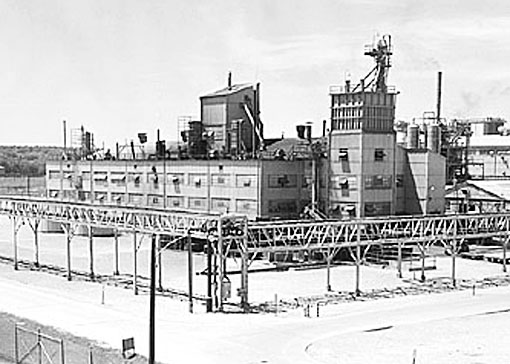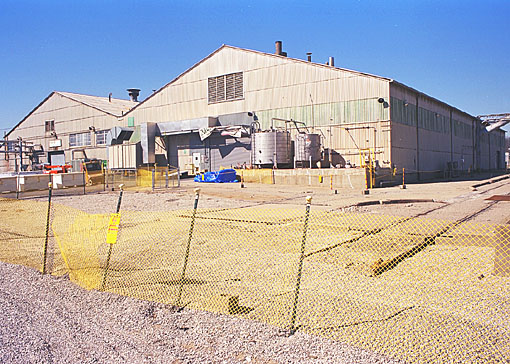The EEOICPA was passed in 2000. It provides compensation to workers who became ill as a result of their employment manufacturing nuclear weapons in the USA, as well as their spouses, children, and grandchildren.
Are you eligible for compensation? If you or a family member worked at this or another AWE facility and became ill, you may be entitled to compensation of up to $150K plus medical benefits. Call EEOICPA Counsel Hugh Stephens at 1-855-548-4494 or fill out our free claim evaluation, We can help even if you’ve already filed, even if your claim was denied!
Here, we have compiled publicly available information and documentation about the facilities covered by the Act to clarify how their activities relate to the Energy Employees Occupational Illness Compensation Program Act.
General Electric Company (Evendale,Ohio)
Feed Materials Production Center (FMPC)
General Electric Company (Ohio)
Also Known As: GE Evendale, GE Cincinnati, GE Lockland, Air Force Plant 36
State: Ohio
Location: Cincinnati/Evendale
Time Period: BE 1951-1970; DOE 1961-June 30,1970
Facility Type: Beryllium Vendor Department of Energy
Facility Description: The Evendale Plant’s major mission is to build aircraft engines. The AEC used this facility to work with a variety of radioactive materials, including uranium and thorium. This facility was also involved in the refining or fabrication of beryllium or beryllium oxide.
Listing:
General Electric Company is listed as a Department of Energy (DOE) site under the EEOICPA.
Classes:
All employees of the Department of Energy, its predecessor agencies, and their contractors and subcontractors who worked at General Electric Co. in Evendale, Ohio, from January 1, 1961 through June 30, 1970, for a number of work days aggregating at least 250 work days, occurring either solely under this employment or in combination with work days within the parameters established for one or more other classes of employees included in the Special Exposure Cohort.
Compensation:
As of 08/23/2015, the total compensation paid under Parts B and E of the EEOICPA, including medical compensation, for workers suffering from the effects of having worked at the General Electric Company (Ohio) is $97,825,017.
General Electric Company (Ohio) Workers:
If you or your parent worked at this or any other DOE or AWE facility and became ill, you may be entitled to compensation of up to $400K plus medical benefits from the US Department of Labor. Call EEOICPA Counsel Hugh Stephens at 1-855-EEOICPA (336-4272) or fill out the form to the right, whether or not you have already filed a claim, and even if your claim has been accepted or denied.
We can help with all OWCP (Federal Workers Compensation) claims, impairments, wage loss and health care. 2495 Main Street, Suite 442 Buffalo, NY.
History:
Department of Defense Formerly Used Defense Sites (FUDS) – Southwest Ohio Air Force Plant 36
Site Number: G05OH0991
This 68 acre site is located in Evendale, Ohio, Hamilton County, Sycamore Township, near Cincinnati. The United States Air Force (AF) acquired this property from the Reconstruction Finance Company by 2 deeds. The first of these deeds was in October 1948, and the second was in August 1949. The United States AF owned the Air Force Plant 36 property from October 1948 to June 1989. During this time the mission of the plant was the assembly and testing of aircraft engines. In 1989, the property was quitclaimed to General Electric. The former Air Force Plant had 21 underground storage tanks (removed in 1987) that were used for the storage of gasoline, kerosene, diesel fuel, jet fuel, waste fuel, and process water. The site also has a fuel farm consisting of four 1,000,000-gallon aboveground storage tanks and fuel distribution system. The site had a chip loading area which contained scrap metal and metal shavings from aluminum, magnesium, nickel, chromium, and titanium alloys. Concrete floor drains, storm water sewers, and drainage ditches on the site have been subjected to wash water, oily wastewater runoff, metals, and petroleum. Contaminants known or alleged to be found in ground water,surface water, soils, and the aquifer include TPH, TCE, BTEX, acetone, trichloroethene, PCB, tetrachloroethene, aluminum, magnesium, nickel, chromium and titanium. The site is proposed for Hazardous, Toxic, and Radioactive Waste (HTRW) and Resource Conservation Recovery Act (RCRA)investigations. The HTRW projects are proposed for hydrogeologic study, ground water monitoring, and investigation of former underground storage tank (UST) sites. The RCRA facilities are proposed for investigation of the storm drainage system, the sanitary sewer, the oil-water separators, and the chip stockpile and loading area, as well as a study of the confining clay layer between the upper and lower (water supply) aquifers. These investigations are ongoing.
OHIO DEPARTMENT OF HEALTH BUREAU OF RADIATION PROTECTION
Historical Radiological Sites in Ohio Comprehensive List
General Electric Co.
a.k.a. GE Evendale, GE Cincinnati, GE Lockland , Air Force Plant 36
Cincinnati, Ohio
1951 – 1970
-Documentation reviewed indicates that Aircraft Nuclear Propulsion (ANP) work reportedly began at this General Electric facility in 1951 as a joint Air Force/AEC program, which subsequently ended in 1961.
-Performed work under AEC license involving radioactive material between 1961 and 1970.
-The Evendale Plant’s major mission is to build aircraft engines. The AEC used this facility towork with a variety of radioactive materials, including uranium and thorium. This facility was also involved in the refining or fabrication of beryllium or beryllium oxide.
Use of radioactive materials reportedly continued at this facility for other AEC related work until 1973.
* General Electric Co. (Ohio) – SEC Petition Evaluation Report:
Operations Description:
General Electric’s Aircraft Nuclear Propulsion (ANP) Project began in 1951 at the facility in Evendale, Ohio. The ANP work was performed in a facility known as Air Force Plant 36, a 68-acre portion of the larger General Electric Aircraft Engine Plant (EPA, 2008). The ANP Project was terminated in 1961; however, the use of radioactive materials continued under other Atomic Energy Commission (AEC) contracts (Murphy, 1988, p. 9). In 1961, GE-Ohio continued as a prime contractor to the AEC for development of high-temperature fuel elements and reactor materials (Review, 1979, pdf p. 4). From 1961 through June 30, 1970, the AEC contract work occupied buildings C and D and certain other smaller auxiliary structures, under a use permit from the Air Force. Custody of the facilities was returned to the Air Force on June 30, 1970 (General Electric, 1974a).
Information available to NIOSH regarding the size of the radiological workforce at GE-Ohio is limited. In 1959, during the ANP Project, approximately 3000 people were employed on the ANP project, approximately 600 of which were scientific and engineering personnel (General Electric, 1974b, pdf pp. 11-13). Indications of radiological workforce size during the covered 1961-1970 period include the following:
;An April 1961 newspaper article states: In practical terms [the cancellation of the ANP project] means that Evendale’s work force will be reduced from 2300 to 375 (POPSEE Sketches, 1991, pdf p. 7)
;A July 2010 discussion with former GE-Ohio employees indicates that there were between 300 and 350 workers during the 1961 to 1970 timeframe. (Outreach Meeting Minutes, 2010)
AEC operations at GE-Ohio during the Department of Energy (DOE) operations period from January 1, 1961 through June 30, 1970 included:
;testing fuel element materials and high-temperature reactor materials (Rice, 1966, pdf p. 110);
;testing the effects of radiation on refractory metals and alloys (Rice, 1966, pdf p. 110);
;examining radiation effects in beryllium oxide (Rice, 1966, pdf p. 110);
;examining fission product transport processes in reactor fuels (Rice, 1966, pdf p. 110);
;testing the effects on clad uranium-oxide fuels in meltdown environments (Rice, 1966, pdf p. 110);
;developing a process for densification of thoria (Herries, 1966, pdf p. 5); and
;calcination of thorium-oxide in high-temperature furnaces (Rennich, 1965, pdf p. 53).
NIOSH has been unable to collect detailed data describing the processes or equipment associated with the operations listed above. Much of the operations and monitoring data obtained by NIOSH are relevant only to the ANP Project years at GE-Ohio, prior to the covered period under evaluation in this report. NIOSH data capture efforts also failed to produce detailed source term information related to DOE/AEC operations at GE-Ohio during the 1961-through-1970 period. Review of the available data indicates the onsite existence of thorium and fission product residues (Karl, 1969). The potential for uranium and thorium exposures is also evidenced by the inclusion of elemental uranium, enriched uranium, and thorium in the GE-Ohio bioassay program through the 1960s (Boback, 1965; General Electric, 1964; General Electric, 1967).
Figure 4-1 provides an aerial photo of the General Electric Co. site in Evendale, Ohio, with the Air Force Plant No. 36 boundary delineated by the dashed line.
Figure 4-2 shows a more close-up drawing of the Air Force Plant No. 36 footprint.
Building C
Building C, measuring approximately 660 x 280 feet, was built circa 1941. In 1956, additional space was needed to support the ANP operations in Building D; 42% of Building C was allocated and henceforth called “C-West” (General Electric, 1984, pdf p. 9). Between 1961 and 1968, Building C-West was used for fuel element production in conjunction with AEC reactor development programs (General Electric, 1984, pdf p. 15). Beginning in 1967, Room 120 of Building C-West was used to calcine high-purity thoria (ThO 2) for the thermal breeder reactor program. By June 1984, Building C-West was decontaminated to levels below the contemporaneous NRC guideline levels for unrestricted use (General Electric, 1984, pdf p. 66).
Building D
Building D, measuring approximately 680 x 450 feet, was built in 1943 as an aluminum foundry (Review, 1979, pdf p. 11). In 1951, Building D was chosen as the operational laboratory building for the ANP operation (Review, 1979). The main Laboratory area is divided into six blocks of alternating rows of laboratories or rooms. Other support facilities were located west of the Laboratory area. A high bay area was located along the entire length of the north side of Building D. The east portion of the high bay in the Laboratory area housed the Radioactive Materials Laboratory (three hot cells), additional laboratories, central air conditioning and exhaust facilities, and the Nuclear Experimental Area (Thorium Inventory, 1973-1996, pdf p. 8). Sources of laboratory alpha contamination were natural uranium, depleted uranium, 93% enriched uranium, and natural thorium (Thorium Inventory, 1973-1996). Sources of beta-gamma contamination included fission products from irradiated uranium fuel elements in laboratory areas, such as the Radioactive Materials Laboratory; L4-8 (Metallurgical Warm Cell); and Ll-6/Ll-8 (Radiochemistry Warm Cell) (Thorium Inventory, 1973-1996). Decontamination of Building D was completed in 1987 (Thorium Inventory, 1973-1996, pdf p. 17; Hoffer, 1987; Murphy, 1988).
Radioactive Waste Storage Area
The Radioactive Waste Storage facilities were built in 1957 to upgrade the centralized storage and control of radioactive waste prior to shipment to an approved burial site (General Electric, 1986a, pdf p. 10). These facilities were located on the north end of Building D, and consisted of a fenced concrete storage pad on the west adjacent to a decontamination building in the middle, and a clean drum storage area east of the building (Murphy, 1988, pdf p. 17; General Electric, 1986a). The heated building was primarily used for storage of liquid wastes. The west pad was an open area for storage of 55-gallon drums filled with contaminated wastes. On a few occasions (dates unknown to NIOSH), the concrete floor inside the building was contaminated by thorium liquid leakage from the drums (General Electric, 1986a). Decontamination of the Radioactive Waste Storage Area was completed in 1986 (General Electric, 1986a).
*Source
Feed Materials Production Center (FMPC)
Also Known As: Fernald, Fernald Environmental Management Project (FEMP), FERMCO, Fernald Environmental Project, and NLO.
State: Ohio
Location: Fernald
Time Period: 1951-present
Facility Type: Department of Energy
Facility Description: The Feed Materials Production Center (FMPC) at the Fernald site was established by AEC in 1951 to convert depleted uranium, natural uranium, and low-enriched uranium compounds into uranium metal and to fabricate uranium metal into feed stock for fuel and target elements for reactors that produced weapons-grade plutonium and tritium. The Fernald Plant, operated by National Lead of Ohio (NLO), along with the Weldon Spring Plant in Missouri, were feed materials plants built by the AEC in the 1950s to supply fuel to the increasing number of nuclear reactors located at Hanford and Savannah River. Production operations at the Fernald site continued until July 10, 1989, when they were suspended by the Department of Energy (DOE). DOE formally shut down the facility on June 19, 1991. During its production mission, the Fernald site produced over 225 million kilograms (500 million pounds) of high-purity uranium products to support United States defense initiatives.
Throughout the course of its operations, the potential for beryllium exposure existed at this site, due to beryllium use, residual contamination, and decontamination activities.
CONTRACTORS: Fluor Fernald (1992-present); Westinghouse (1985-1992); National Lead of Ohio (1951-1985)
Listing:
Feed Materials Production Center (FMPC) is listed as Department of Energy (DOE) site under the EEOICPA.
Classes:
All employees of DOE, DOE contractors, or subcontractors who worked at all locations at the Feed Materials Production Center (FMPC) in Fernald, Ohio, also known as the Fernald Environmental Management Project (FEMP), from January 1, 1968, through December 31, 1978, for a number of work days aggregating at least 250 work days, occurring either solely under this employment or in combination with work days within the parameters established for one or more classes of employees included in the Special Exposure Cohort.
All employees of the Feed Materials Production Center (FMPC) in Fernald, Ohio, who were not employed by National Lead of Ohio, NLO, or the Department of Energy or its predecessor agencies, who worked at FMPC from January 1, 1951, through December 31, 1983, for a number of work days aggregating at least 250 work days, occurring either solely under this employment, or in combination with work
(Note: This class was established from Petition 46)
All employees of the Department of Energy, its predecessor agencies, and their contractors and subcontractors who worked at the Feed Materials Production Center (FMPC) in Fernald, Ohio, from January 1, 1954, through December 31, 1967, for a number of work days aggregating at least 250 work days, occurring either solely under this employment, or in combination with work days within the parameters established for one or more other classes of employees included in the Special Exposure Cohort.
(Note: This class was established from Petition 46)
History:
The Feed Materials Production Center (FMPC) is located northwest of Cincinnati in Fernald, Ohio. The facility received its name because the uranium fuel cores it produced were used to “feed” the Atomic Energy Commission’s reactors at Oakridge, Savannah River, and Hanford. FMPC produced about 170,000 metric tons of uranium metals from 1951 to 1989. Because of its location, it is also known as Fernald. FMPC also was the central repository for the U.S. thorium supply.
The Fernald Closure Project started in 1990 and was overseen by the Department of Energy. The site underwent an environmental cleanup and the waste was buried. However, because of the high level of contamination, the site remains unfit for human habitation and will most likely have to be closely monitored forever.
Compensation:
As of 08/23/2015, the total compensation paid under Parts B and E of the EEOICPA, including medical compensation, for workers suffering from the effects of having worked at the Feed Materials Production Center is $240,777,905.
Feed Materials Production Center Workers:
If you or your parent worked at this or any other DOE or AWE facility and became ill, you may be entitled to compensation of up to $400K plus medical benefits from the US Department of Labor. Call EEOICPA Counsel Hugh Stephens at 1-855-EEOICPA (336-4272) or fill out the form to the right, whether or not you have already filed a claim, and even if your claim has been accepted or denied.
We can help with all OWCP (Federal Workers Compensation) claims, impairments, wage loss and health care. 2495 Main Street, Suite 442 Buffalo, NY.
*From the Fernald Closure Project:
Construction of one of the production facilities (6335-109)
The 1,050-acre Feed Materials Production Center (Fernald site) was designed as a large-scale, integrated facility capable of converting uranium ore and recycled material into uranium metal through a series of chemical and metallurgical conversions. Approximately 136 acres in the center of the site were used in the actual production process; the remaining acreage included administration facilities, laboratories, waste storage areas, and buffer land. The production area contained 10 primary plants, each with a specific mission to support the uranium metal production process.
Pilot Plant, the UF6 to UF4 Reduction Facility:
Pilot Plant, the UF6 to UF 4 Reduction Facility (6333-1).
The Pilot Plant became the first plant to operate in October 1951. The plant served as an operating prototype of all phases of Fernald’s uranium metal production process. After the shutdown of Plant 7 in 1956, the Pilot Plant converted uranium hexafluoride to uranium tetrafluoride, called green salt, for use in the metal production process. The plant was also used to coat metal-casting crucibles by plasma spray to minimize carbon pickup in uranium metal products. In the early 1960’s, workers developed a high-purity melting and casting technique in the Pilot Plant, and thorium production operations resumed for several years. Fernald completed safe shutdown of the Pilot Plant in June 1996, and plans to complete demolition of the plant in 2003.
Plant 1, the Sampling Plant:
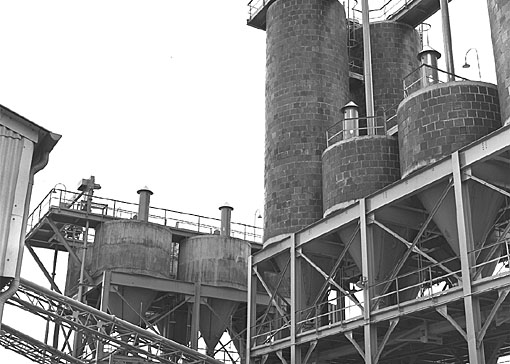 Plant 1, the Sampling Plant (89-366-1).
Plant 1, the Sampling Plant (89-366-1).
Plant 1 operations began in December 1953. The plant was used to weigh, sample, classify and sort (by uranium content) incoming raw material from off-site sources and process residues from on-site operations. Shortly after coming on line, the AEC designated Plant 1 the official AEC sampling station. Prior to this, sampling was completed at the New Brunswick Laboratory in Middlesex, N.J. The Plant 1 Complex included the Plant 1 Pad, a concrete pad used to store drums of incoming material and process waste, and the 14 Plant 1 Ore Silos which were used to store bulk processed raw materials. In 1989, site management shut down all plant operations to focus on environmental compliance and waste management issues. Fernald completed safe shutdown of Plant 1 in August 1995, and imploded the steel structure in February 1997. The Plant 1 Ore Silos were dismantled in 1994 as part of a CERCLA removal action.
Plants 2 and 3, the Ore Refinery Plants:
Plants 2 & 3, the Ore Refinery Plants (89-148-1).
Plants 2 & 3 operations began in December 1953. The plants were used to convert impure uranium feed material and recycled residue to high purity uranium trioxide following a three-step procedure (digestion, extraction, denitration) involving chemical and thermal processes. Plants 2 & 3 were originally designed to process 4,570 metric tons of uranium per year, but were later expanded to double their capacity. In 1962, site management placed Plants 2 & 3 on standby when refining operations were consolidated at the Weldon Spring site near St. Louis, Mo. For the next few years, Plants 2 & 3 operations processed only scrap feed until 1966, when they were reactivated following the shutdown of Weldon Spring. Plants 2 & 3 operations continued through 1989 when site management shut down all plant operations to focus on environmental compliance and waste management. Fernald completed safe shutdown of Plant 2 in December 1998 and Plant 3 in September 1997. Fernald plans to complete demolition of Plants 2 & 3 in 2003.
Plant 4, the Green Salt Plant:
Plant 4, the Green Salt Plant (89-319-1).
Plant 4 operations began in October 1953. The plant was used to convert uranium trioxide to uranium dioxide, called brown oxide, by reducing it with hydrogen. The brown oxide was reacted with anhydrous hydrogen fluoride to produce uranium tetrafluoride, called green salt. Green salt was then used in the uranium metal production process that occurred in Plant 5. Plant 4’s production peak occurred in 1958 when it produced nearly 12,000 metric tons of uranium of normal uranium tetrafluoride. A decline in demand caused the facility to operate sporadically from the early 1970s to 1980, when the process was restarted and operated until site management shut down all plant operations in 1989 to focus on environmental compliance and waste management issues. Fernald completed safe shutdown of Plant 4 in October 1995, and imploded the steel structure in August 1996.
Plant 5, the Metals Production Plant:
Plant 5, the Metals Production Plant (479-9).
Plant 5 operations began in May 1953. The plant contained large furnaces that were used to convert green salt to uranium metal derbies by a thermite reduction process using magnesium metal granules. The uranium derbies were then loaded into graphite cubicles, vacuum melted in induction-heated furnaces and poured into molds to create ingots. The ingots were weighed, sampled, washed and stored for further processing in Plant 6. From 1953 through 1956, derby and ingot production rose steadily. In later years production fluctuated. Fernald completed safe shutdown of Plant 5 in March 1997, and completed demolition in 2001.
Plant 6, the Metals Fabrication Plant:
Plant 6, the Metals Fabrication Plant (479-4).
Plant 6 operations began in the summer of 1952. The plant was used to fabricate ingots into finished uranium cores. The ingots were heat-treated to improve their strength and grain structure and shaped into oval billets in the rolling mill. Some billets were shipped off site for extrusion into tubes of various dimensions, and later returned to the Fernald site where they were machined, cut to specific slug sizes, and shipped to other production sites. In 1971, Fernald shut down the rolling mill operation and all machined ingots were heat-treated and shipped to Reactive Metals, Inc. (RMI) in Ashtabula, Ohio, for extrusion into tubes. Fernald completed safe shutdown of Plant 6 in December 1998, and demolition in 2002.
Plant 7, the Hexafluoride Reduction Plant:
Plant 7, the Hexafluoride Reduction Plant (479-13).
Plant 7 operations began in June 1954. The plant was used to convert uranium hexafluoride to green salt using the same process as the Pilot Plant. The green salt was used in Plant 5 to produce uranium metal. After only two years of operation, the AEC directed the shutdown of Plant 7 because a similar processing plant was operating in Paducah, Ky. For the next 13 years, site management considered several proposals for the idle facility, but none of the proposals were accepted. In 1969, all equipment was excessed and sold, and the building was used to store drums of green salt and empty containers. In 1994, Fernald imploded the Plant 7 steel structure as a CERCLA removal action to reduce the potential for contamination exposure to workers, the public and environment. Plant 7 was the first major production plant demolished, requiring two separate implosions to bring the seven-story structure to the ground.
Plant 8, the Scrap Recovery Plant:
Plant 8, the Scrap Recovery Plant (479-6).
Plant 8 operations began in November 1953. The plant was used to convert scrap uranium metal and metal-bearing waste from off-site sources and Fernald operations into black oxide. The black oxide was then sent to Plant 1 as a feed material. Because uranium was such a valuable material, Fernald recycled uranium contained in waste streams for reuse. Machining chips and turnings were compacted into briquettes in Plant 6, re-melted in Plant 5 and sent back to Plant 8 for uranium recovery. During the 1970s, Plant 8 operated on an as-needed basis. In 1980, it returned to full operations until 1989, when site management shut down plant operations to focus on environmental compliance and waste management issues. Fernald completed safe shutdown of Plant 8 in March 1998, and plans to complete demolition in 2003.
Plant 9, the Special Products Plant:
Plant 9, the Special Products Plant (6333-15).
Plant 9 operations began in October 1954. Originally, it was used to produce thorium metal until 1956, when interest in thorium metal started to decline. The plant was used to cast special oversized enriched uranium ingots (larger than those processed in Plants 5 and 6) into billets. All Plant 9 operations were discontinued in 1989, when site management shut down plant operations to focus on environmental compliance and waste management issues. In the 1990s, Plant 9 housed the Minimum Waste Stabilization Project that investigated the use of vitrification to stabilize waste sludges and other contaminated material. Fernald completed safe shutdown of Plant 9 in January 1996, and completed demolition in 1998.
Videos:
A more detailed explanation of the activities at FMPC can be seen below:


















